C1SCHEDULES
F98FIFTH SCHEDULE PROTOCOL I
F97PART VI Final Provisions
Fifth and Sixth Schedules inserted (20.7.1998) by 1995 c. 27, s. 6, Sch.; S.I. 1998/1505, art. 2
F1Article 92— Signature
Fifth and Sixth Schedules inserted (20.7.1998) by 1995 c. 27, s. 6, Sch.; S.I. 1998/1505, art. 2
This Protocol shall be open for signature by the Parties to the Conventions six months after the signing of the Final Act and will remain open for a period of twelve months.
F2Article 93— Ratification
Fifth and Sixth Schedules inserted (20.7.1998) by 1995 c. 27, s. 6, Sch.; S.I. 1998/1505, art. 2
This Protocol shall be ratified as soon as possible. The instruments of ratification shall be deposited with the Swiss Federal Council, depositary of the Conventions.
F3Article 94— Accession
Fifth and Sixth Schedules inserted (20.7.1998) by 1995 c. 27, s. 6, Sch.; S.I. 1998/1505, art. 2
This Protocol shall be open for accession by any Party to the Conventions which has not signed it. The instruments of accession shall be deposited with the depositary.
F6Article 95— Entry into force
Fifth and Sixth Schedules inserted (20.7.1998) by 1995 c. 27, s. 6, Sch.; S.I. 1998/1505, art. 2
F41
This Protocol shall enter into force six months after two instruments of ratification or accession have been deposited.
F52
For each Party to the Conventions thereafter ratifying or acceding to this Protocol, it shall enter into force six months after the deposit by such Party of its instrument of ratification or accession.
F9Article 96— Treaty relations upon entry into force of this Protocol
Fifth and Sixth Schedules inserted (20.7.1998) by 1995 c. 27, s. 6, Sch.; S.I. 1998/1505, art. 2
E11
When the Parties to the Conventions are also Parties to this Protocol, the Conventions shall apply as supplemented by this Protocol.
F72
When one of the Parties to the conflict is not bound by this Protocol, the Parties to the Protocol shall remain bound by it in their mutual relations. They shall furthermore be bound by this Protocol in relation to each of the Parties which are not bound by it, if the latter accepts and applies the provisions thereof.
F83
The authority representing a people engaged against a High Contracting Party in an armed conflict of the type referred to in Article 1, paragraph 4, may undertake to apply the Conventions and this Protocol in relation to that conflict by means of a unilateral declaration addressed to the depositary. Such declaration shall, upon its receipt by the depositary, have in relation to that conflict the following effects:
a
the Conventions and this Protocol are brought into force for the said authority as a Party to the conflict with immediate effect;
b
the said authority assumes the same rights and obligations as those which have been assumed by a High Contracting Party to the Conventions and this Protocol; and
c
the Conventions and this Protocol are equally binding upon all Parties to the conflict.
F12Article 97— Amendment
Fifth and Sixth Schedules inserted (20.7.1998) by 1995 c. 27, s. 6, Sch.; S.I. 1998/1505, art. 2
F101
Any High Contracting Party may propose amendments to this Protocol. The text of any proposed amendment shall be communicated to the depositary, which shall decide, after consultation with all the High Contracting Parties and the International Committee of the Red Cross, whether a conference should be convened to consider the proposed amendment.
F112
The depositary shall invite to that conference all the High Contracting Parties as well as the Parties to the Conventions, whether or not they are signatories of this Protocol.
F19Article 98— Revision of Annex I
Fifth and Sixth Schedules inserted (20.7.1998) by 1995 c. 27, s. 6, Sch.; S.I. 1998/1505, art. 2
F131
Not later than four years after the entry into force of this Protocol and thereafter at intervals of not less than four years, the International Committee of the Red Cross shall consult the High Contracting Parties concerning Annex I to this Protocol and, if it considers it necessary, may propose a meeting of technical experts to review Annex I and to propose such amendments to it as may appear to be desirable. Unless, within six months of the communication of a proposal for such a meeting to the High Contracting Parties, one third of them object, the International Committee of the Red Cross shall convene the meeting, inviting also observers of appropriate international organisations. Such a meeting shall also be convened by the International Committee of the Red Cross at any time at the request of one third of the High Contracting Parties.
F142
The depositary shall convene a conference of the High Contracting Parties and the Parties to the Conventions to consider amendments proposed by the meeting of technical experts if, after that meeting, the International Committee of the Red Cross or one third of the High Contracting Parties so request.
F153
Amendments to Annex I may be adopted at such a conference by a two-thirds majority of the High Contracting Parties present and voting.
F164
The depositary shall communicate any amendment so adopted to the High Contracting Parties and to the Parties to the Conventions. The amendment shall be considered to have been accepted at the end of a period of one year after it has been so communicated, unless within that period a declaration of non-acceptance of the amendment has been communicated to the depositary by not less than one third of the High Contracting Parties.
F175
An amendment considered to have been accepted in accordance with paragraph 4 shall enter into force three months after its acceptance for all High Contracting Parties other than those which have made a declaration of non-acceptance in accordance with that paragraph. Any Party making such a declaration may at any time withdraw it and the amendment shall then enter into force for that Party three months thereafter.
F186
The depositary shall notify the High Contracting Parties and the Parties to the Conventions of the entry into force of any amendment, of the Parties bound thereby, of the date of its entry into force in relation to each Party, of declarations of non-acceptance made in accordance with paragraph 4, and of withdrawals of such declarations.
F24Article 99— Denunciation
Fifth and Sixth Schedules inserted (20.7.1998) by 1995 c. 27, s. 6, Sch.; S.I. 1998/1505, art. 2
F201
In case a High Contracting Party should denounce this Protocol, the denunciation shall only take effect one year after receipt of the instrument of denunciation. If, however, on the expiry of that year the denouncing Party is engaged in one of the situations referred to in Article 1, the denunciation shall not take effect before the end of the armed conflict or occupation and not, in any case, before operations connected with the final release, repatriation or re-establishment of the persons protected by the Conventions or this Protocol have been terminated.
F212
The denunciation shall be notified in writing to the depositary, which shall transmit it to all the High Contracting Parties.
F223
The denunciation shall have effect only in respect of the denouncing Party.
F234
Any denunciation under paragraph 1 shall not affect the obligations already incurred, by reason of the armed conflict, under this Protocol by such denouncing Party in respect of any act committed before this denunciation becomes effective.
F25Article 100— Notifications
Fifth and Sixth Schedules inserted (20.7.1998) by 1995 c. 27, s. 6, Sch.; S.I. 1998/1505, art. 2
The depositary shall inform the High Contracting Parties as well as the Parties to the Conventions, whether or not they are signatories of this Protocol, of:
a
signatures affixed to this Protocol and the deposit of instruments of ratification and accession under Articles 93 and 94;
b
the date of entry into force of this Protocol under Article 95;
c
communications and declarations received under Articles 84, 90 and 97;
d
declarations received under Article 96, paragraph 3, which shall be communicated by the quickest methods; and
e
denunciations under Article 99.
F28Article 101— Registration
Fifth and Sixth Schedules inserted (20.7.1998) by 1995 c. 27, s. 6, Sch.; S.I. 1998/1505, art. 2
F261
After its entry into force, this Protocol shall be transmitted by the depositary to the Secretariat of the United Nations for registration and publication, in accordance with Article 102 of the Charter of the United Nations.
F272
The depositary shall also inform the Secretariat of the United Nations of all ratifications, accessions and denunciations received by it with respect to this Protocol.
F31Article 102— Authentic texts
Fifth and Sixth Schedules inserted (20.7.1998) by 1995 c. 27, s. 6, Sch.; S.I. 1998/1505, art. 2
The original of this Protocol, of which the Arabic, Chinese, English, French, Russian and Spanish texts are equally authentic, shall be deposited with the depositary, which shall transmit certified true copies thereof to all the Parties to the Conventions.
F29 ANNEX I
Fifth and Sixth Schedules inserted (20.7.1998) by 1995 c. 27, s. 6, Sch.; S.I. 1998/1505, art. 2
[Note: the following text includes amendments to Annex I made under Article 98 of the Protocol which entered into force on 1st March 1994]
F30 REGULATIONS CONCERNING IDENTIFICATION
Fifth and Sixth Schedules inserted (20.7.1998) by 1995 c. 27, s. 6, Sch.; S.I. 1998/1505, art. 2
F36Article 1— General provisions
Fifth and Sixth Schedules inserted (20.7.1998) by 1995 c. 27, s. 6, Sch.; S.I. 1998/1505, art. 2
F321
The regulations concerning identification in this Annex implement the relevant provisions of the Geneva Conventions and the Protocol; they are intended to facilitate the identification of personnel, material, units, transports and installations protected under the Geneva Conventions and the Protocol.
F332
These rules do not in and of themselves establish the right to protection. This right is governed by the relevant articles in the Conventions and the Protocol.
F343
The competent authorities may, subject to the relevant provisions of the Geneva Conventions and the Protocol, at all times regulate the use, display, illumination and detectability of the distinctive emblems and signals.
F354
The High Contracting Parties and in particular the Parties to the conflict are invited at all times to agree upon additional or other signals, means or systems which enhance the possibility of identification and take full advantage of technological developments in this field.
F37CHAPTER I— IDENTITY CARDS
Fifth and Sixth Schedules inserted (20.7.1998) by 1995 c. 27, s. 6, Sch.; S.I. 1998/1505, art. 2
F41Article 2— Identity card for permanent civilian medical and religious personnel
Fifth and Sixth Schedules inserted (20.7.1998) by 1995 c. 27, s. 6, Sch.; S.I. 1998/1505, art. 2
F381
The identity card for permanent civilian medical and religious personnel referred to in Article 18, paragraph 3, of the Protocol should:
a
bear the distinctive emblem and be of such size that it can be carried in the pocket;
b
be as durable as practicable;
c
be worded in the national or official language and, in addition and when appropriate, in the local language of the region concerned;
d
mention the name, the date of birth (or, if that date is not available, the age at the time of issue) and the identity number, if any, of the holder;
e
state in what capacity the holder is entitled to the protection of the Conventions and of the Protocol;
f
bear the photograph of the holder as well as his signature or his thumbprint, or both;
g
bear the stamp and signature of the competent authority;
h
state the date of issue and date of expiry of the card;
i
indicate, whenever possible, the holder’s blood group, on the reverse side of the card.
F392
The identity card shall be uniform throughout the territory of each High Contracting Party and, as far as possible, of the same type for all Parties to the conflict. The Parties to the conflict may be guided by the single-language model shown in Figure 1. At the outbreak of hostilities, they shall transmit to each other a specimen of the model they are using, if such model differs from that shown in Figure 1. The identity card shall be made out, if possible, in duplicate, one copy being kept by the issuing authority, which should maintain control of the cards which it has issued.
F403
In no circumstances may permanent civilian medical and religious personnel be deprived of their identity cards. In the event of the loss of a card, they shall be entitled to obtain a duplicate copy.
F44Article 3— Identity card for temporary civilian medical and religious personnel
Fifth and Sixth Schedules inserted (20.7.1998) by 1995 c. 27, s. 6, Sch.; S.I. 1998/1505, art. 2
F421
The identity card for temporary civilian medical and religious personnel should, whenever possible, be similar to that provided for in Article 1 of these Regulations. The Parties to the conflict may be guided by the model shown in Figure 1.
F432
When circumstances preclude the provision to temporary civilian medical and religious personnel of identity cards similar to those described in Article 2 of these Regulations, the said personnel may be provided with a certificate signed by the competent authority certifying that the person to whom it is issued is assigned to duty as temporary personnel and stating, if possible, the duration of such assignment and his right to wear the distinctive emblem. The certificate should mention the holder’s name and date of birth (or if that is not available, his age at the time when the certificate was issued), his function and identity number, if any. It shall bear his signature or his thumbprint, or both.
F45CHAPTER II— THE DISTINCTIVE EMBLEM
Fifth and Sixth Schedules inserted (20.7.1998) by 1995 c. 27, s. 6, Sch.; S.I. 1998/1505, art. 2
F46Article 4— Shape
Fifth and Sixth Schedules inserted (20.7.1998) by 1995 c. 27, s. 6, Sch.; S.I. 1998/1505, art. 2
The distinctive emblem (red on a white ground) shall be as large as appropriate under the circumstances. For the shapes of the cross, the crescent or the lion and sun, the High Contracting Parties may be guided by the models shown in Figure 2.
F51Article 5— Use
Fifth and Sixth Schedules inserted (20.7.1998) by 1995 c. 27, s. 6, Sch.; S.I. 1998/1505, art. 2
F471
The distinctive emblem shall, whenever possible, be displayed on a flat surface, on flags or in any other way appropriate to the lay of the land, so that it is visible from as many directions and from as far away as possible, and in particular from the air.
F482
At night or when visibility is reduced, the distinctive emblem may be lighted or illuminated.
F493
The distinctive emblem may be made of materials which make it recognisable by technical means of detecting. The red parts should be painted on top of black primer paint in order to facilitate its identification, in particular by infrared instruments.
F504
Medical and religious personnel carrying out their duties in the battle area shall, as far as possible, wear headgear and clothing bearing the distinctive emblem.
F52CHAPTER III— DISTINCTIVE SIGNALS
Fifth and Sixth Schedules inserted (20.7.1998) by 1995 c. 27, s. 6, Sch.; S.I. 1998/1505, art. 2
F57Article 6— Use
Fifth and Sixth Schedules inserted (20.7.1998) by 1995 c. 27, s. 6, Sch.; S.I. 1998/1505, art. 2
F531
All distinctive signals specified in this Chapter may be used by medical units or transports.
F542
These signals, at the exclusive disposal of medical units and transports, shall not be used for any other purpose, the use of the light signal being reserved (see paragraph 3 below).
F553
In the absence of a special agreement between the Parties to the conflict reserving the use of flashing blue lights for the identification of medical vehicles, ships and craft, the use of such signals for other vehicles, ships and craft is not prohibited.
F564
Temporary medical aircraft which cannot, either for lack of time or because of their characteristics, be marked with the distinctive emblem, may use the distinctive signals authorised in this Chapter.
F62Article 7— Light signal
Fifth and Sixth Schedules inserted (20.7.1998) by 1995 c. 27, s. 6, Sch.; S.I. 1998/1505, art. 2
F581
The light signal, consisting of a flashing blue light as defined in the Airworthiness Technical Manual of the International Civil Aviation Organisation (ICAO) Doc. 9051, is established for the use of medical aircraft to signal their identity. No other aircraft shall use this signal. Medical aircraft using the flashing blue light should exhibit such lights as may be necessary to make the light signal visible from as many directions as possible.
F592
In accordance with the provisions of Chapter XIV, para. 4 of the International Maritime Organisation (IMO) International Code of Signals, vessels protected by the Geneva Conventions of 1949 and the Protocol should exhibit one or more flashing blue lights visible from any direction.
F603
Medical vehicles should exhibit one or more flashing blue lights visible from as far away as possible. The High Contracting Parties and, in particular, the Parties to the conflict which use lights of other colours should give notification of this.
F614
The recommended blue colour is obtained when its chromaticity is within the boundaries of the International Commission on Illumination (ICI) chromaticity diagram defined by the following equations:
green boundary | y = 0.065 + 0.805 x; |
white boundary | y = 0.400 a x; |
purple boundary | x = 0.133 + 0.600 y. |
The recommended flashing rate of the blue light is between sixty and one hundred flashes per minute.
F66Article 8— Radio signal
Fifth and Sixth Schedules inserted (20.7.1998) by 1995 c. 27, s. 6, Sch.; S.I. 1998/1505, art. 2
F631
The radio signal shall consist of the urgency signal and the distinctive signal as described in the International Telecommunication Union (ITU) Radio Regulations (RR Articles 40 and N 40).
F642
The radio message preceded by the urgency and distinctive signals mentioned in paragraph 1 shall be transmitted in English at appropriate intervals on a frequency or frequencies specified for this purpose in the Radio Regulations, and shall convey the following data relating to the medical transports concerned:
a
call sign or other recognised means of identification;
b
position;
c
number and type of vehicles;
d
intended route;
e
estimated time en route and of departure and arrival, as appropriate;
f
any other information, such as flight altitude, guarded radio frequencies, languages used and secondary surveillance radar modes and codes.
F653
In order to facilitate the communications referred to in paragraphs 1 and 2, as well as the communications referred to in Articles 22, 23 and 25 to 31 of the Protocol, the High Contracting Parties, the Parties to a conflict, or one of the Parties to a conflict, acting in agreement or alone, may designate, in accordance with the Table of Frequency Allocations in the Radio Regulations annexed to the International Telecommunication Convention, and publish selected national frequencies to be used by them for such communications. The International Telecommunication Union shall be notified of these frequencies in accordance with procedures approved by a World Administrative Radio Conference.
F71Article 9— Electronic identification
Fifth and Sixth Schedules inserted (20.7.1998) by 1995 c. 27, s. 6, Sch.; S.I. 1998/1505, art. 2
F671
The Secondary Surveillance Radar (SSR) system, as specified in Annex 10 to the Chicago Convention on International Civil Aviation of 7 December 1944, as amended from time to time, may be used to identify and to follow the course of medical aircraft. The SSR mode and code to be reserved for the exclusive use of medical aircraft shall be established by the High Contracting Parties, the Parties to a conflict, or one of the Parties to a conflict, acting in agreement or alone, in accordance with procedures to be recommended by the International Civil Aviation Organisation.
F682
Protected medical transports may, for their identification and location, use standard aeronautical radar transponders and/or maritime search and rescue radar transponders.
It should be possible for protected medical transports to be identified by other vessels or aircraft equipped with secondary surveillance radar by means of a code transmitted by a radar transponder, e.g. in mode 3/A, fitted on the medical transports.
The code transmitted by the medical transport transponder should be assigned to that transport by the competent authorities and notified to all the Parties to the conflict.
F693
It should be possible for medical transports to be identified by submarines by the appropriate underwater acoustic signals transmitted by the medical transports.
The underwater acoustic signal shall consist of the call sign (or any other recognised means of identification of medical transport) of the ship preceded by the single group YYY transmitted in morse on an appropriate acoustic frequency, e.g. 5kHz.
Parties to a conflict wishing to use the underwater acoustic identification signal described above shall inform the Parties concerned of the signal as soon as possible, and shall, when notifying the use of their hospital ships, confirm the frequency to be employed.
F704
Parties to a conflict may, by special agreement between them, establish for their use a similar electronic system for the identification of medical vehicles, and medical ships and craft.
F72CHAPTER IV— COMMUNICATIONS
Fifth and Sixth Schedules inserted (20.7.1998) by 1995 c. 27, s. 6, Sch.; S.I. 1998/1505, art. 2
F75Article 10— Radiocommunications
Fifth and Sixth Schedules inserted (20.7.1998) by 1995 c. 27, s. 6, Sch.; S.I. 1998/1505, art. 2
F731
The urgency signal and the distinctive signal provided for in Article 8 may precede appropriate radiocommunications by medical units and transports in the application of the procedures carried out under Articles 22, 23 and 25 to 31 of the Protocol.
F742
The medical transports referred to in Articles 40 (Section II, No. 3209) and N 40 (Section III, No. 3214) of the ITU Radio Regulations may also transmit their communications by satellite systems, in accordance with the provisions of Articles 37, N 37 and 59 of the ITU Radio Regulations for the Mobile-Satellite Services.
F76Article 11— Use of international codes
Fifth and Sixth Schedules inserted (20.7.1998) by 1995 c. 27, s. 6, Sch.; S.I. 1998/1505, art. 2
Medical units and transports may also use the codes and signals laid down by the International Telecommunication Union, the International Civil Aviation Organisation and the International Maritime Organisation. These codes and signals shall be used in accordance with the standards, practices and procedures established by these Organisations.
F77Article 12— Other means of communication
Fifth and Sixth Schedules inserted (20.7.1998) by 1995 c. 27, s. 6, Sch.; S.I. 1998/1505, art. 2
When two-way radiocommunication is not possible, the signals provided for in the International Code of Signals adopted by the International Maritime Organisation or in the appropriate Annex to the Chicago Convention on International Civil Aviation of 7 December 1944, as amended from time to time, may be used.
F78Article 13— Flight plans
Fifth and Sixth Schedules inserted (20.7.1998) by 1995 c. 27, s. 6, Sch.; S.I. 1998/1505, art. 2
The agreements and notifications relating to flight plans provided for in Article 29 of the Protocol shall as far as possible be formulated in accordance with procedures laid down by the International Civil Aviation Organisation.
F79Article 14— Signals and procedures for the interception of medical aircraft.
Fifth and Sixth Schedules inserted (20.7.1998) by 1995 c. 27, s. 6, Sch.; S.I. 1998/1505, art. 2
If an intercepting aircraft is used to verify the identity of a medical aircraft in flight or to require it to land in accordance with Articles 30 and 31 of the Protocol, the standard visual and radio interception procedures prescribed by Annex 2 to the Chicago Convention on International Civil Aviation of 7 December 1944, as amended from time to time, should be used by the intercepting and the medical aircraft.
F80CHAPTER V— CIVIL DEFENCE
Fifth and Sixth Schedules inserted (20.7.1998) by 1995 c. 27, s. 6, Sch.; S.I. 1998/1505, art. 2
F85Article 15— Identity card
Fifth and Sixth Schedules inserted (20.7.1998) by 1995 c. 27, s. 6, Sch.; S.I. 1998/1505, art. 2
F811
The identity card of the civil defence personnel provided for in Article 66, paragraph 3, of the Protocol is governed by the relevant provisions of Article 2 of these Regulations.
F822
The identity card for civil defence personnel may follow the model shown in Figure 3.
F833
If civil defence personnel are permitted to carry light individual weapons, an entry to that effect should be made on the card mentioned.
F843
If civil defence personnel are permitted to carry light individual weapons, an entry to that effect should be made on the card mentioned.
F89Article 16— International distinctive sign
Fifth and Sixth Schedules inserted (20.7.1998) by 1995 c. 27, s. 6, Sch.; S.I. 1998/1505, art. 2
F861
The international distinctive sign of civil defence provided for in Article 66, paragraph 4, of the Protocol is an equilateral blue triangle on an orange ground. A model is shown in Figure 4:
F872
It is recommended that:
a
if the blue triangle is on a flag or armlet or tabard, the ground to the triangle be the orange flag, armlet or tabard;
b
one of the angles of the triangle be pointed vertically upwards;
c
no angle of the triangle touch the edge of the orange ground.
F883
The international distinctive sign shall be as large as appropriate under the circumstances. The distinctive sign shall, whenever possible, be displayed on flat surfaces or on flags visible from as many directions and from as far away as possible. Subject to the instructions of the competent authority, civil defence personnel shall, as far as possible, wear headgear and clothing bearing the international distinctive sign. At night or when visibility is reduced, the sign may be lighted or illuminated; it may also be made of materials rendering it recognisable by technical means of detection.
F90CHAPTER VI— WORKS AND INSTALLATIONS CONTAINING DANGEROUS FORCES
Fifth and Sixth Schedules inserted (20.7.1998) by 1995 c. 27, s. 6, Sch.; S.I. 1998/1505, art. 2
F95Article 17— International special sign
Fifth and Sixth Schedules inserted (20.7.1998) by 1995 c. 27, s. 6, Sch.; S.I. 1998/1505, art. 2
F911
The international special sign for works and installations containing dangerous forces, as provided for in Article 56, paragraph 7, of the Protocol, shall be a group of three bright orange circles of equal size, placed on the same axis, the distance between each circle being one radius, in accordance with Figure 5 illustrated below.
F922
The sign shall be as large as appropriate under the circumstances.
When displayed over an extended surface it may be repeated as often as appropriate under the circumstances. It shall, whenever possible, be displayed on flat surfaces or on flags so as to be visible from as many directions and from as far away as possible.
F933
On a flag, the distance between the outer limits of the sign and the adjacent sides of the flag shall be one radius of a circle. The flag shall be rectangular and shall have a white ground.
F944
At night or when visibility is reduced, the sign may be lighted or illuminated. It may also be made of materials rendering it recognisable by technical means of detection.
F96ANNEX II Identity Card for Journalists on Dangerous Professional Missions
Fifth and Sixth Schedules inserted (20.7.1998) by 1995 c. 27, s. 6, Sch.; S.I. 1998/1505, art. 2
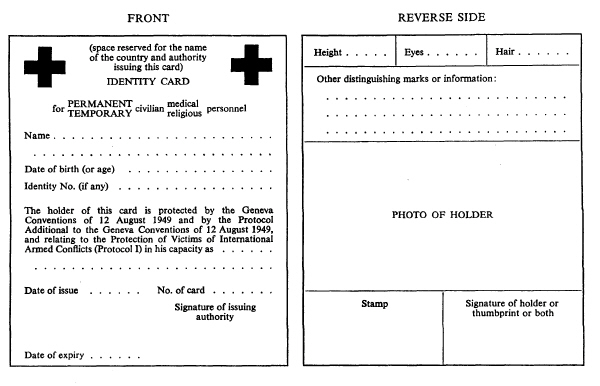

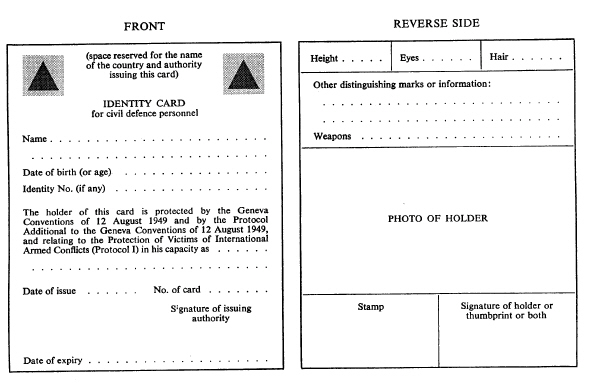
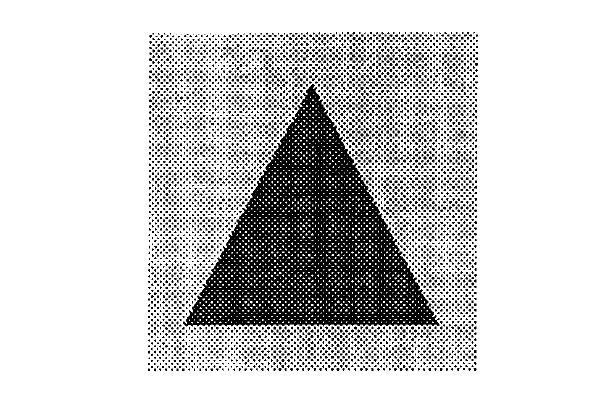
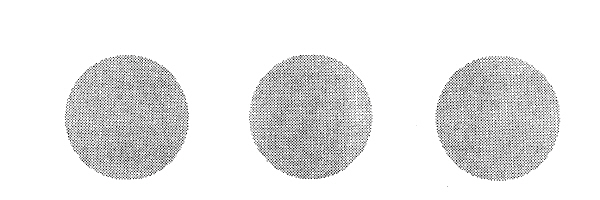
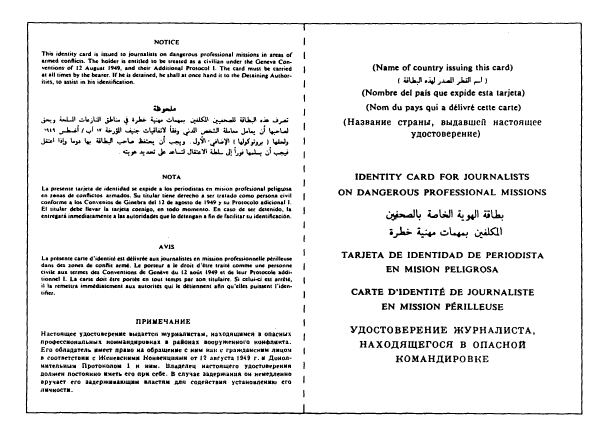
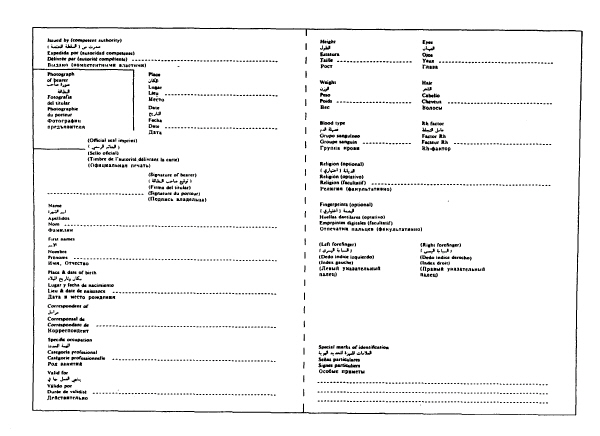
Fifth and Sixth Schedules inserted (20.7.1998) by 1995 c. 27, s. 6, Sch.; S.I. 1998/1505, art. 2